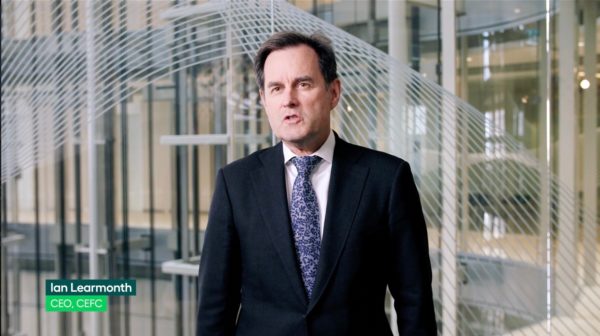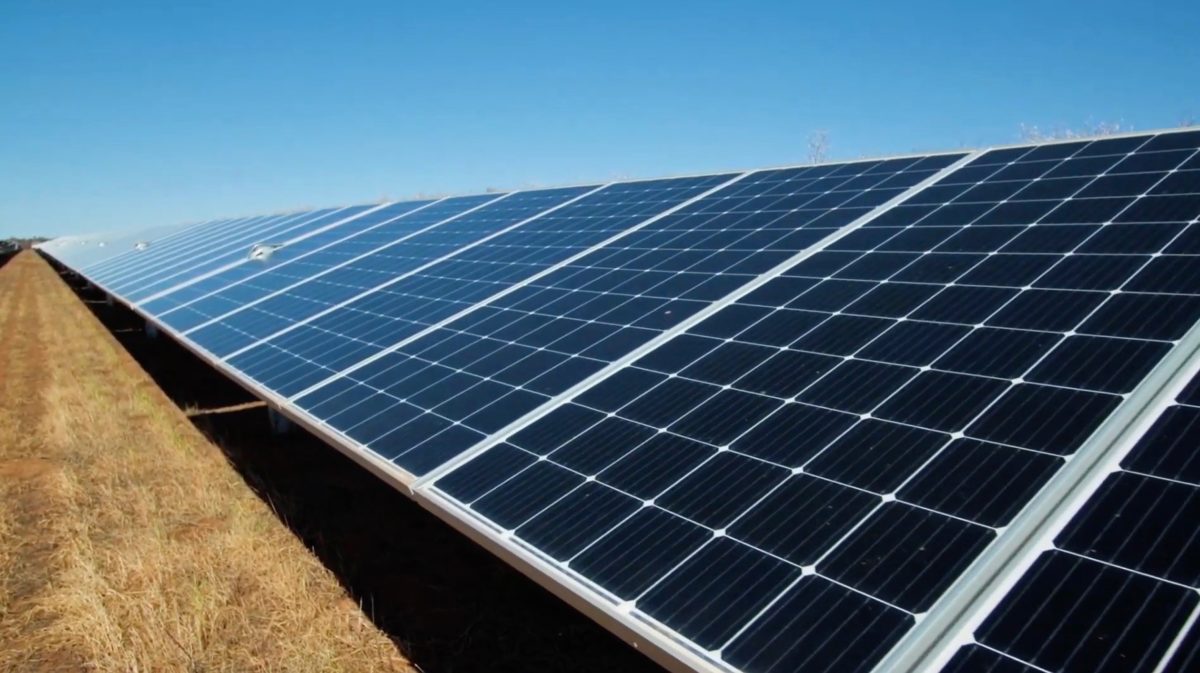The Clean Energy Finance Corporation (CEFC), described recently as “the world’s most successful green bank” by Prime Minister Morrison, has tabled its Annual Report to the Australian Senate this week, lauding the rigour of its commercial investment and the CEFC’s invigorating position at the centre of Australia’s transmission to renewable energy and lower emissions.
CEFC CEO Ian Learmonth noted that the CEFC plays a unique role as a catalyst for change. “We invest to lead the market,” said Learmonth, “putting our capital to work in new areas, building investor confidence and accelerating solutions to difficult problems. Our record of achievement gives the market confidence to follow our lead.”
The Report spoke to the “ongoing maturity of the renewables sector”, noting the delivery of the Renewable Energy Target 12 months ahead of schedule as a direct reflection of the dynamism of wind and solar markets across the country.
The CEFC is committed to continued investment in large-scale solar after continuing to observe the transformation of Australia’s electricity sector. “Open NEM data shows that renewables, including rooftop solar PV, contributed 21.3% of generation in the NEM in 2018-19, up from 17.7% a year earlier.”
Of course, this is not the only trend feeding CEFC investment trends, industry is also switching to solar, particularly large manufacturers who have signed PPAs and mines in remote areas replacing diesel with solar.
In the last year, the CEFC marked an important milestone in large-scale solar and wind with its commitments since inception on track to deliver 1.6 GW of new solar and 2 GW of new wind in regional Australia. This milestone is inclusive of 39 large-scale solar and wind projects around the country since CEFC’s inception. 30 of these projects are already generating electricity to the grid.

Image: Clean Energy Finance Corporation
Research
The CEFC is also at the forefront of research in the clean energy market, including reports on:
- How much rooftop solar can be installed in Australia?
- Distributed energy in the property sector: today’s opportunities
- Clean Energy in Infrastructure: Airports
We can suppose this research into the cleaning up of airport infrastructure played a key role in the $150 million EFC investment toward driving down the emissions of Australia’s largest infrastructure; an investment that brought other private investors on board, such as IFM Investors, one of Australia’s largest superannuation funds.
The result was a push for integral facets of Australian infrastructure, such as Ausgrid, Melbourne Airport, Brisbane Airport, NSW Ports (Botany and Kembla), the Port of Brisbane, Southern Cross Station in Melbourne and Northern Territory Airports, to coordinate for the first time in the setting of emissions reduction targets through 2030 and beyond.
Highlights
Among the highlights the CEFC has chosen to highlight there are several notable successes:
- The CEFC has deployed more than $5 billion to investments and projects around Australia since it began investing, including $1.3 billion in the last year alone.
- CEFC is already repaying significant amounts of capital, $718 million since inception and $321 million in 2018-19.
- In the last year, CEFC has delivered $400 million in finance for smaller-scale projects.
- The CEFC’s $200 million Clean Energy Innovation Fund invested $69 million in 2018/19.
“In 2018-19 we further strengthened our position as Australia’s leading specialist clean energy investor,” said Learmonth. “CEFC finance is playing an increasingly important role in efforts to drive down emissions right across the economy, including in agriculture, energy, infrastructure, property, transport and waste.”
The Report’s author, Chair Steven Skala AO, said that after another strong year of investment, the CEFC has consolidated its position as a reliable financial institution and prudent steward of Australian taxpayers’ money.
“In an area where prediction is both difficult and often unreliable, one thing is clear: Australia is on the path to decarbonisation,” said Skala. “The question is not where as a nation we continue in that direction but rather, how quickly and effectively we do so, and how well we adapt to new energy mixes as part of that journey.”
Future
Over the coming years, Learmonth has set out clear targets for the CEFC:
- Electrifying the transport sector
- Making infrastructure and manufacturing more sustainable
- Building the waste-to-energy sector
- Building on the already massive investment in wind and solar, for, due to the country’s abundance of resources, “there is so much potential yet to be realised.”
The full Report can be viewed here.
This content is protected by copyright and may not be reused. If you want to cooperate with us and would like to reuse some of our content, please contact: editors@pv-magazine.com.









1 comment
By submitting this form you agree to pv magazine using your data for the purposes of publishing your comment.
Your personal data will only be disclosed or otherwise transmitted to third parties for the purposes of spam filtering or if this is necessary for technical maintenance of the website. Any other transfer to third parties will not take place unless this is justified on the basis of applicable data protection regulations or if pv magazine is legally obliged to do so.
You may revoke this consent at any time with effect for the future, in which case your personal data will be deleted immediately. Otherwise, your data will be deleted if pv magazine has processed your request or the purpose of data storage is fulfilled.
Further information on data privacy can be found in our Data Protection Policy.